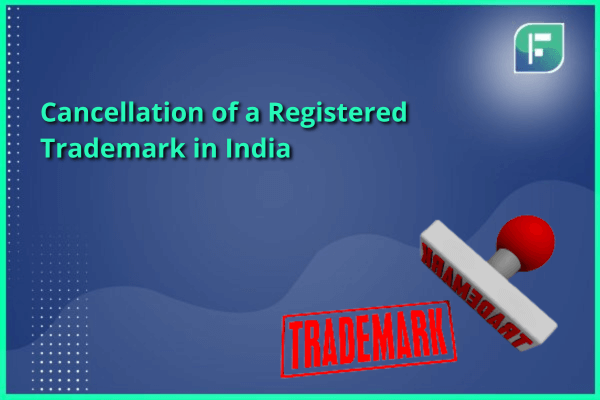In India, the Trademarks Act of 1999 governs issues concerning trademark registration. To ensure the lawful use of a trademark, registration with the Registrar of Trademarks is a requisite. When a trademark requires modification, removal, or cancellation, it’s formally communicated to the Registrar for necessary action. The Act delineates the specific procedures, reasons, and the process for carrying out cancellation of a registered trademark in India.
Who Can Apply for Cancellation of a Registered Trademark?
The following can apply for cancellation of a registered trademark in India:
1. Those Affected by Trademark Registration
Any individual or entity adversely impacted by a registered trademark has the right to seek its cancellation.
2. Concerned Parties for a Trademark
Those having a vested interest in a specific trademark may pursue its cancellation. However, this can only be done in some cases and only based on particular grounds given in the Act.
3. Authority of the Registrar of Trademarks
The Registrar of Trademarks can also cancel a trademark registration if the trademark is remaining un-renewed even after the allotted ten years from its initial registration.
4. Right of the Registered Proprietor for Cancellation
As per Section 58 of the Act, the registered proprietor of a trademark holds the right to initiate the cancellation process for removing the trademark entry from the register.
Grounds for Cancellation of a Registered Trademark
Cancellation of a registered trademark registration can be pursued based on specific grounds as outlined in Section 47, 50, and 57 of the Act. These grounds include:
1. Lack of Genuine Intention to Use
Trademarks registered for goods and services without a genuine intention to use them.
2. Non-Bona Fide Use
Failure to make bona fide use of a trademark for a continuous period of five years following its registration.
3. Deceptive or Confusing Use
Employing a registered trademark in a way that misleads or confuses the public.
4. Misrepresentation or Concealment
The proprietor’s misrepresentation or failure to reveal essential facts regarding the trademark during the registration process. If these facts were accurately disclosed, they would not have warranted the trademark’s registration.
5. Alteration in Circumstances
Changes occurring after the trademark’s registration that invalidate its continued registration.
6. Violation of Conditions
Violation or failure to observe any conditions mentioned in the Register of Trademarks, leading to the right for any person to file for the cancellation of registration.
Procedure and Forms for Cancellation of a Registered Trademark
The procedure for cancellation of a registered trademark involves these steps:
1. Issuing Notice
When the cancellation application is received, the Registrar or Appellate Board issues a notice to all relevant parties.
2. Submission of Counter Statements
Involved parties have the chance to submit counter statements in response to the application. This enables them to present their arguments and defend their case.
3. Submission of Evidence
Both parties involved are allowed to submit evidence to support their respective positions.
4. Hearing of Cases
A hearing is conducted where both sides present their cases and provide additional information as needed.
5. Registrar’s Order
In cases filed with the Registrar, the Registrar hears both parties and, after considering the evidence, issues an order. If the Registrar orders the cancellation, the trademark is removed from the register.
6. Appeal to the Appellate Board
Parties dissatisfied with the Registrar’s decision can appeal the order to the Appellate Board.
7. Appellate Board Procedure
When the application is before the Appellate Board directly, the same procedure as that of civil courts is followed.
8. Intimation to the Registrar
If the Appellate Board decides in favour of cancellation, it informs the Registrar to carry out the cancellation of the trademark.
9. Writ Petition to the High Court
Parties can also file a writ petition in HC if they want to challenge the decision made by the Appellate Board.
Forms for Cancellation of Trademarks
In accordance with the Trademarks Rules, 2017, specific forms are used for submitting applications for trademark cancellation before the Registrar. These forms are essential for initiating the cancellation process. There are two primary forms for this purpose:
1. Form TM-O:
This form is used for the removal of a trademark based on the grounds outlined in Section 47 and Section 57 of the Act.
2. Form TM-U:
Form TM-U is employed for applying for the cancellation of a trademark entry when the grounds for cancellation align with those specified in Section 50 of the Act.
These forms serve as the official method through which individuals or entities can request trademark cancellations, ensuring adherence to the relevant legal provisions.
Final Thoughts
In India, the cancellation of a registered trademark follows a clearly defined legal process outlined by the pertinent sections of the Act and the Trademarks Rules of 2017. Any individual or entity feeling aggrieved by a registered trademark possesses the right to request its cancellation on particular grounds. These grounds may involve issues such as non-use, deception, and misrepresentation. The decision of whether to file for cancellation with the Registrar of Trademarks or the Intellectual Property Appellate Board hinges on jurisdiction. The cancellation process includes notice issuance, counter statements, submission of evidence, hearings, and the issuance of orders. Additionally, specific forms, such as Form TM-O and Form TM-U, are prescribed for formally initiating the cancellation process. This procedure ensures fairness and transparency in dealing with trademark cancellations, with the possibility of appeals to higher authorities, such as the Appellate Board and the High Court, for those dissatisfied with the outcomes.






